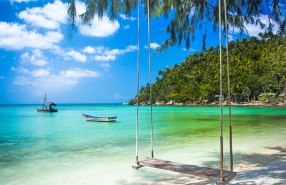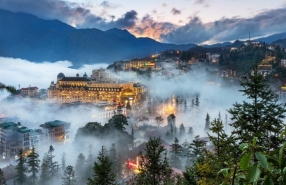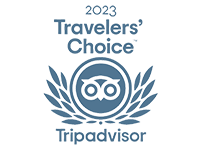
Welcome to our blog, where we embark on a journey to explore the rich cultural heritage of Ho Chi Minh City. Today, our spotlight falls on a magnificent and iconic landmark, the Ho Chi Minh City Opera House. Known affectionately as the City Theater or the Saigon Opera House, this grand structure stands proudly at the heart of the city, overlooking Lam Son Square and Dong Khoi Street in District 1.
1. What is Saigon Opera House
Steeped in history and architectural splendor, the Ho Chi Minh House is not only a hub for diverse artistic performances but also a venue that hosts grand events. Its strategic location makes it a central and convenient gathering place, drawing locals and tourists alike to witness the captivating world of performing arts.
Designed in the timeless style of Western architecture, this enduring masterpiece serves as a testament to the city's enduring appreciation for the arts. With its ornate façade and elegant interiors, the opera house exudes a sense of grandeur and sophistication, transporting visitors to a bygone era of glamor and cultural refinement.
Beyond its aesthetic appeal, the Ho Chi Minh Opera House holds a special place in the hearts of locals. It has become an integral part of the city's identity, a symbol of artistic expression and a cherished venue for artistic endeavors, from symphonies and ballets to captivating theatrical performances.
2. The history of Saigon Opera House
a. From the beginning
The Saigon Opera House, situated in the vibrant city of Ho Chi Minh City, holds a captivating history that reflects the region's cultural and architectural heritage. Originally constructed during the French colonial period in 1897 by French architect Eugene Ferret, the theater stood as a symbol of French influence in the region. It was initially established as a venue to entertain French expeditionary forces and was temporarily housed in a wooden structure located at the residence of the Admiral-Governor. However, recognizing the need for a more permanent and elaborate space, a new theater was built adjacent to the temporary one, and on January 1, 1900, the grand Saigon Opera House was inaugurated.
Throughout the years, the theater underwent various transformations and served different purposes. Initially funded by the city authorities, the theater aimed to bring French opera and entertainment to the local audience. However, despite plans to make it an exclusive entertainment hub for the elite, the theater faced challenges in attracting patrons. Nightclubs, music restaurants, and dance halls became more popular among pleasure-seekers, ultimately leading to a decline in the theater's popularity.
In 1943, amid criticisms about its architectural complexity and high maintenance costs, the theater underwent renovations to adopt a more youthful architectural style. Decorative elements, including the statue of the goddess of art and other embellishments, were removed from the façade. Unfortunately, during World War II, the theater suffered significant damage from Allied air raids in 1944, forcing it to suspend operations.
b. After 1945
Following the war, the theater saw various uses. It served as temporary housing for French civilians migrating from the North to the South after the Geneva Agreement in 1954. In 1955, the theater was renovated and transformed into the headquarters of the National Assembly of the Republic of Vietnam government.
However, after the reunification of Vietnam in 1975, the Saigon Opera House regained its original purpose as a venue for artistic performances. In 1998, on the occasion of Saigon's 300th anniversary, the theater underwent extensive renovations to restore its original architectural style. The restoration project included the replication of roof tiles, the replacement of seats with cushioned ones, the restoration of interior statues, and the revitalization of wall sculptures and statues.
Today, the Saigon Opera House stands as a remarkable testament to the fusion of French colonial architecture and Vietnamese cultural heritage. It continues to enchant audiences with a wide range of artistic performances, preserving its legacy as a cultural landmark in Ho Chi Minh City.
3. What to do in Saigon Opera House
a. Marvelous architecture
This architectural masterpiece serves as a counterpart to the Hanoi Opera House and is a true gem in Vietnam's cultural landscape. Designed by the talented architects Broger et Harloy, this stunning opera house was built in 1911, following the design of the iconic Opéra Garnier in Paris.
What sets the Saigon Opera House apart are its unique characteristics and distinctive charm. Back in 1900, architects Félix Olivier, Ernest Guichard, and Eugène Ferret poured their creative genius into this project, incorporating the flamboyant architectural style of the Third French Republic. As you gaze at its front facade, you can't help but notice the clear artistic influences from the Petit Palais, a magnificent palace constructed in the same year in France. It's like a piece of Parisian grandeur transported to the heart of Saigon.
Step inside, and you'll be greeted with a fusion of tradition and modernity. The interior design of the Saigon Opera House is a true testament to innovation. Equipped with cutting-edge sound and lighting systems, every performance comes to life with impeccable precision. With a total seating capacity of 1800 spread across the ground floor and two upper levels, there's plenty of room for spectators to enjoy the magic of the stage. The decorative patterns, reliefs on the facade, and interior furnishings were meticulously drawn by a renowned artist in France, reminiscent of the grand theaters of late 19th-century France.

Now, let's address the criticisms that have surrounded the Saigon Opera House. Some have raised concerns about the intricate decoration on the front facade. Adorned with numerous reliefs and raised sculptures in the Imperial style, reminiscent of City Hall, it has faced criticism for being overly intricate and confusing. In response, a decision was made in 1943 to remove some of these decorative details in an effort to modernize the architectural style.
Fast forward to 1998, a momentous year for Ho Chi Minh City. The authorities took the opportunity to restore the Saigon Opera House to its original grandeur. During the renovation and upgrading process, certain decorations, such as the statues of two artistic goddesses, floral motifs, and elegant lamps, were lovingly restored. This restoration project aimed to revive the opera house's true essence and celebrate the city's 300th anniversary. The total cost for this ambitious restoration and refurbishment endeavor amounted to approximately 25 billion Vietnamese dong at the time.
b. The garden of the Opera House
The Saigon Opera House, a renowned cultural symbol, carries a captivating history of statues that have left an indelible mark on its landscape. In 1967, during the era of the Second Republic of Vietnam, a towering 9-meter statue of a soldier from the Vietnam People's Navy was erected in front of the opera house. This decision sparked controversy and raised eyebrows as it was perceived by some as a symbolic act of the military "pointing guns" at the government. The statue's imposing presence became a topic of debate, reflecting the tense political climate of the time.
Another notable statue that once graced Saigon's Lam Son Square was the beloved "Mother's Love" statue. Sadly, in 2014, it was dismantled to make way for the construction of the Ben Thanh - Suoi Tiên metro line. This loss was deeply felt by the community, as the statue held sentimental value and was cherished for its depiction of the unbreakable bond between a mother and her child.
The Saigon Opera House's statues were not only objects of artistic expression but also became platforms for political activism. On a fateful day in July 1970, two French anti-war activists, André Marcel Menras and Jean Pierre Debris, climbed the Lam Son Square statue and raised the flag of the National Liberation Front of South Vietnam. They distributed leaflets urging resistance against the war. However, their bold act did not go unpunished. The Saigon authorities swiftly arrested the activists, and they were subsequently convicted by the Saigon Military Court for "disturbing public order." This incident shed light on the complexities of the era and the extent to which the war had divided opinions.
The events of April 30, 1975, marked a turning point for the Saigon Opera House's statues. As the city underwent significant changes, the statues were toppled, and the garden reverted to its original state. However, in December 1997, on the occasion of the 300th anniversary of Saigon - Ho Chi Minh City, the City Council made a momentous decision. A new statue, named "Tình mẫu tử" or "Mother's Love," was crafted from red granite, standing at a height of 2.6 meters. This sculpture, created by the talented artist Nguyễn Quốc Thắng, beautifully captures the tender love between a mother and her child. It serves as a poignant reminder of the enduring strength and nurturing nature of motherhood.
Intriguingly, in 2005, concerns were raised about the copyright of the "Tình mẫu tử" statue. The Lao Dong newspaper discovered similarities between this statue and a sculpture by Chinese artist Dương Lệ Vân, titled "Mother's Love," published in a Chinese sculpture journal in 1995. This revelation added an unexpected twist to the statue's narrative, prompting further discussions about artistic inspiration and intellectual property.
c. Catch a theater shows at the opera house
As the home to the Ho Chi Minh City Symphony Orchestra, the Saigon Opera House offers a wide range of performances, including classical concerts, opera, ballet, traditional Vietnamese dance, modern dance, musicals, and more. Below are some renowned programs that take place at the Saigon Opera House for you to choose from:
À Ố Show is a renowned Vietnamese cultural performance that has toured over 15 countries since its debut in 2015. Combining bamboo circus and contemporary dance, the show takes audiences on a captivating journey from rustic village life to bustling urban environments. With skilled circus artists and bamboo props, it vividly portrays the past and present of Vietnamese culture. The show's unique bamboo instruments, traditional and modern, create a vibrant and immersive musical experience. À Ố Show is a condensed celebration of Vietnamese art, showcasing the country's rich heritage and captivating performances.

Teh Dar Show, produced by Lune Production, is a contemporary art performance that showcases the unique cultural beauty of Vietnam's ethnic minority groups. Through captivating storytelling and mesmerizing bamboo acrobatics, it brings to life the vibrant melodies created by traditional instruments like bamboo flutes and Central Highlands gongs. The show portrays the wild and tender stories of the Central Highlands people, emphasizing the importance of community and unity. The performers, deeply immersed in the region's culture, authentically portray the Central Highlands' people and traditions. With distinctive red and black costumes, they embody the energetic and free-spirited nature of the region. Teh Dar Show offers an unforgettable experience, celebrating Vietnam's ethnic diversity and artistic expressions.

Follow the narrative of the stories from the farming community in southern Vietnam and their daily struggles in the fields. This touching tale begins with a misty dawn and portrays the hardships caused by storms and other natural disasters, as well as the unwavering determination of the local people to rise above the muddy fields and finally enjoy the joyous feeling of a bountiful harvest. The performers skillfully narrate these stories through the movement of their bodies, utilizing a blend of classical and contemporary dance techniques to connect with the audience. Head to the Saigon Opera House in Ho Chi Minh City, redeem your voucher, and immerse yourself in a vibrant performance that will give you a deeper understanding of Vietnamese lifestyle.
4. Some tips before visiting
Before visiting the Saigon Opera House, also known as the Ho Chi Minh Opera House, here are some helpful tips to enhance your experience:
Check the Performance Schedule: Prior to your visit, make sure to check the performance schedule of the Saigon Opera House. This will allow you to plan your visit accordingly and ensure you don't miss out on any shows or events that you may be interested in.
Purchase Tickets in Advance: Popular performances at the Saigon Opera House tend to sell out quickly. To secure your seat, it is advisable to purchase your tickets in advance, either online or at the box office. This will save you from any disappointment of not being able to attend your desired show.
Dress Code: The Saigon Opera House maintains a formal atmosphere, and it is recommended to dress appropriately. While there is no strict dress code, dressing smartly or in semi-formal attire is generally appreciated. It adds to the overall ambiance and respect for the performers.
Arrive Early: Arriving early allows you to explore and appreciate the stunning architecture of the Saigon Opera House. You can take photographs, admire the intricate details, and soak in the historical significance of the building. Additionally, arriving early ensures you have ample time to find your seat and settle in comfortably before the performance begins.
Photography Etiquette: While photography is usually allowed outside the performance hall, it is important to be respectful during the actual show. Once inside, it is customary to refrain from taking photos or recording videos, as it can be distracting to the performers and fellow audience members. Instead, focus on immersing yourself in the live performance.
Silence Mobile Devices: To maintain a peaceful and uninterrupted environment, remember to silence your mobile devices before entering the performance hall. This ensures that you and others can fully enjoy the show without any disturbances.
Respect the Performers: Show appreciation and respect for the performers by refraining from talking, whispering, or making excessive noise during the performance. This allows everyone to fully immerse themselves in the music, dance, or theatrical production.
Refreshments: The Saigon Opera House often has a bar or cafe where you can purchase refreshments before the show or during intermission. If you wish to enjoy a drink or snack, plan accordingly and arrive early to avoid any rush.
By keeping these tips in mind, you can make the most of your visit to the Saigon Opera House and fully immerse yourself in the cultural and artistic experience it offers. Enjoy the performances and create lasting memories in this iconic venue.
5. Frequent questions about the Saigon Opera house
The Saigon Opera House hosts a diverse range of performances, including classical concerts, opera, ballet, traditional Vietnamese dance, modern dance, musicals, and theatrical productions. It offers a platform for both local and international artists to showcase their talent and entertain audiences.
Yes, you can visit the Saigon Opera House even if there are no performances scheduled. The opera house offers guided tours that allow visitors to explore the stunning architecture, learn about its history, and gain insight into the cultural significance of the venue. Check the official website or contact the opera house for more information on tour schedules.
It is advisable to arrive at the Saigon Opera House at least 15 to 30 minutes before the scheduled performance time. This allows you to find your seat, settle in, and potentially explore the beautiful surroundings of the opera house before the show begins.
The Saigon Opera House does not have its own parking facilities. However, there are public parking areas available nearby, and some hotels or commercial buildings in the vicinity may offer parking options for visitors. It is recommended to plan your transportation and parking arrangements in advance.
By following these tips, you can make the most of your visit to Saigon Opera House and enjoy all that this historic landmark has to offer. If an authentic trip to
Saigon Opera House is what you are after, then don't hesitate to contact us : AUTOUR ASIA -
Vietnam Travel Agency to ensure you the voyage of your dream.



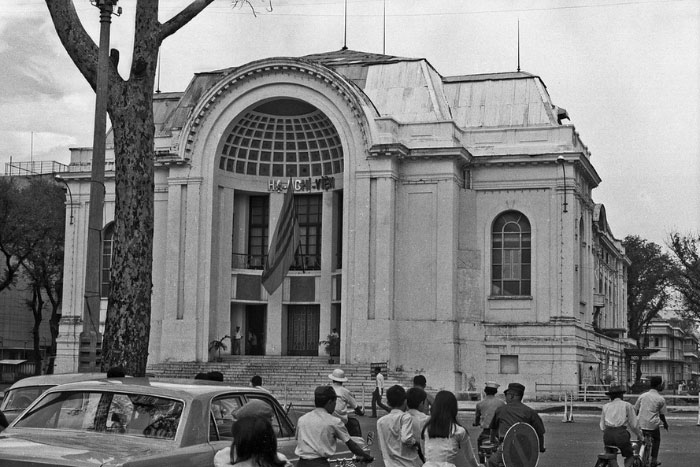


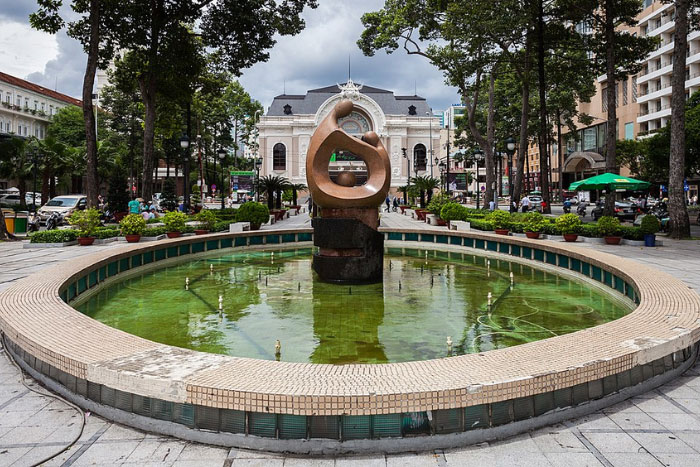








.jpg)











